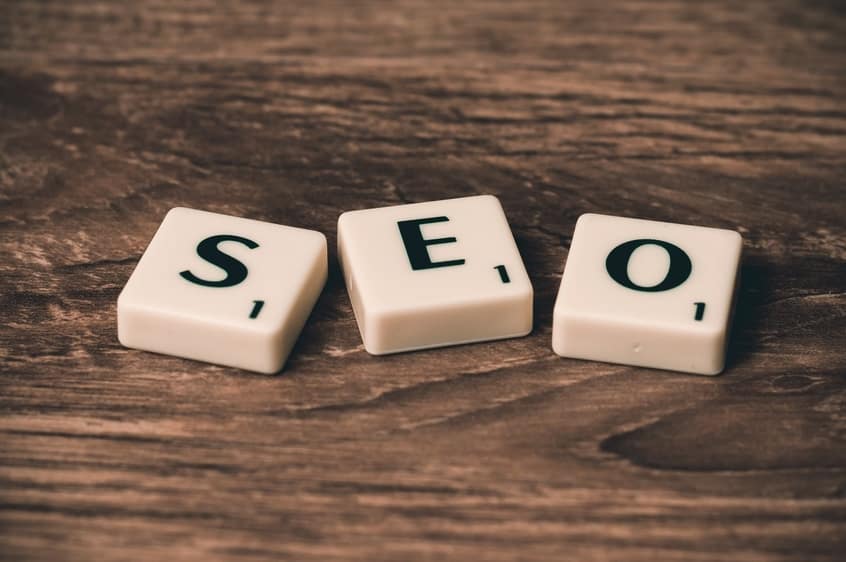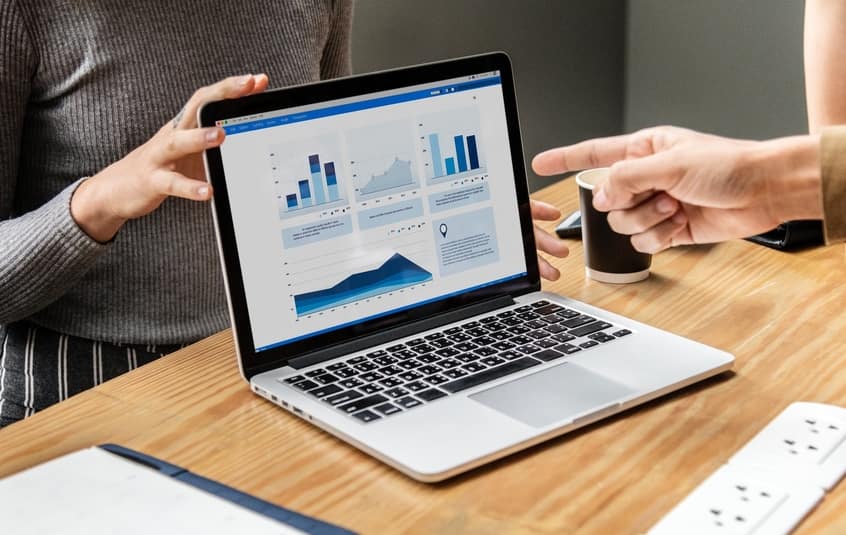When was the last time that you made it through a week without hearing something about digital marketing? It's hasn’t been a long time, has it? This shouldn't be all that surprising considering how much progress it has made. The days of one-sided communication over TV and newspaper Ads are slowly ending; because marketing in the digital age won’t work like that. As a brand, you need to be conversing with your audience, educating and nurturing them.
Digital marketing keeps evolving and you need to know the trends and the future of digital marketing in this tech-driven world if you want to stay up-to-date. Digital marketing is not something exclusive for businesses with a lot of money at their disposal. Small businesses can use it too. Most digital marketing channels like social media, email marketing, and paid search, to name a few are quite affordable. One thing to mind about digital marketing is that it is volatile. New approaches to existing methods and whole new methods come up every year, and this year is no different. What digital marketing trends should you as a small business owner cash in on this year? Read along to find out.
Digital marketing keeps evolving and you need to know the trends and the future of digital marketing in this tech-driven world if you want to stay up-to-date. Digital marketing is not something exclusive for businesses with a lot of money at their disposal. Small businesses can use it too. Most digital marketing channels like social media, email marketing, and paid search, to name a few are quite affordable. One thing to mind about digital marketing is that it is volatile. New approaches to existing methods and whole new methods come up every year, and this year is no different. What digital marketing trends should you as a small business owner cash in on this year? Read along to find out.
#1 Voice Search and Local SEO
You’d agree that it is much easier and less time consuming to say “Find restaurants near me” to your phone than to type the same. This is the age of ‘OK Google,' ‘Siri', ‘Alexa’ and whatever is yet to come. Voice Search is here, and it is here to stay. 55% of adults now use voice search once a day and 3 in 6 Americans now own a smart speaker.
Small businesses need to leverage the growing popularity of voice search with local SEO. This is one way to use the internet to get more footfall to your brick and mortar business. Optimizing your local business’s Google My Business Listing is the best bet. Do this by taking advantage of everything that Google has to offer; Google Posts, Videos, Photos, Messaging, etc. to make sure that you claim your business listing.
Getting your business the coveted Featured Snippet Listing for relevant search queries can do wonders for your small business. Start out by focusing on long tail searches and Q&As because most voice searches are phrased as questions. Most people don’t focus on long tail keywords because of the low search volume without realizing that they are generated by people who are in search of something specific. If you answer these queries the right way, they are most likely to convert.
What if your direct local competitors set up their stores right next to yours? How do nearby businesses with similar products usually compete? An effective method is by mastering local SEO. If your business can rank for local keywords, you will surely get an edge over your competition.
Small businesses need to leverage the growing popularity of voice search with local SEO. This is one way to use the internet to get more footfall to your brick and mortar business. Optimizing your local business’s Google My Business Listing is the best bet. Do this by taking advantage of everything that Google has to offer; Google Posts, Videos, Photos, Messaging, etc. to make sure that you claim your business listing.
Getting your business the coveted Featured Snippet Listing for relevant search queries can do wonders for your small business. Start out by focusing on long tail searches and Q&As because most voice searches are phrased as questions. Most people don’t focus on long tail keywords because of the low search volume without realizing that they are generated by people who are in search of something specific. If you answer these queries the right way, they are most likely to convert.
What if your direct local competitors set up their stores right next to yours? How do nearby businesses with similar products usually compete? An effective method is by mastering local SEO. If your business can rank for local keywords, you will surely get an edge over your competition.

#2 Live and Branded Videos
By now, videos accounts for 82% of consumer internet traffic, and according to a recent study, 4 in 5 consumers claimed that videos demos are helpful and three quarters believe that product video descriptions are essential. Video marketing is no longer static and is now more engaging than ever. Two of the most popular ways this is done is using branded and live videos.
Branded Videos are a lot more engaging that basic text and they convert better because they deliver a lot of information within a short amount of time – while also building trust with your audience. As a small retail business owner, you can do the same for your business. The most important part of the video should be the story you build around your customers. For example, if you run a tax consulting business, the video can be an animation of how time-consuming and stressful tax filing is and how your business can do it for them. You cane even create these animated videos yourself online. Animaker, for example, is a tool that has plans starting at just $12 per month.
Live Video is relatively new but is expected to be 17% of all video traffic by the end of the year. This is probably the best video marketing tool if you want to build a great relationship with your customers. You can actually interact with them by answering any queries live or even ask them to join the live video by calling in. For example, if you are a restaurateur, a live video can show how food is being prepared, sourcing food from the market or garden, customers enjoying food at the table or take viewers through a recipe.
Branded Videos are a lot more engaging that basic text and they convert better because they deliver a lot of information within a short amount of time – while also building trust with your audience. As a small retail business owner, you can do the same for your business. The most important part of the video should be the story you build around your customers. For example, if you run a tax consulting business, the video can be an animation of how time-consuming and stressful tax filing is and how your business can do it for them. You cane even create these animated videos yourself online. Animaker, for example, is a tool that has plans starting at just $12 per month.
Live Video is relatively new but is expected to be 17% of all video traffic by the end of the year. This is probably the best video marketing tool if you want to build a great relationship with your customers. You can actually interact with them by answering any queries live or even ask them to join the live video by calling in. For example, if you are a restaurateur, a live video can show how food is being prepared, sourcing food from the market or garden, customers enjoying food at the table or take viewers through a recipe.
#3 Interactive Content
93% of marketers believe that interactive content is very useful at educating buyers vs. 70% for static content. Polls, infographics, games, and quizzes are some of the most widely used interactive content on the internet. They do better than static content because of two reasons. One; people love to test themselves, compete, compare and share opinions, and two; it brings the dynamism and persuasiveness of human interaction to a website, email, blog or anywhere else.
Adding interactive content to your small business’s content strategy will make it easier for you to reach out to your audience, educate them and compel them towards a buying decision. Let’s take quizzes for example. If you are launching a new product and want to get the word out, you can make a fun quiz with relevant answers leading back to your website. Quizzes are also a great way to build your email list and collect data about your audience. Even better, customized coupons and content can be sent to the email IDs collected based on the answers.
Other types of interactive content include calculators, contests, games, infographics, configurators, and eBooks. These have to be used depending on what stage of the buyer’s journey your audience is in. Contests and games add a lot of value if you want to create awareness. For customers in the consideration stage, eBook, whitepaper, and calculators would work. Configurators can help convert customers in the decision-making stage. There are multiple online tools like Apester and Playbuzz that are cost-effective ways to make interactive content for small businesses.
Adding interactive content to your small business’s content strategy will make it easier for you to reach out to your audience, educate them and compel them towards a buying decision. Let’s take quizzes for example. If you are launching a new product and want to get the word out, you can make a fun quiz with relevant answers leading back to your website. Quizzes are also a great way to build your email list and collect data about your audience. Even better, customized coupons and content can be sent to the email IDs collected based on the answers.
Other types of interactive content include calculators, contests, games, infographics, configurators, and eBooks. These have to be used depending on what stage of the buyer’s journey your audience is in. Contests and games add a lot of value if you want to create awareness. For customers in the consideration stage, eBook, whitepaper, and calculators would work. Configurators can help convert customers in the decision-making stage. There are multiple online tools like Apester and Playbuzz that are cost-effective ways to make interactive content for small businesses.
#4 Digital + Physical
Yes, digital is the present and the future of everything. But that doesn’t mean that it is going to kill brick and mortar businesses completely. The possibilities of a Digital-Physical collaboration is something that only a few businesses explore. Inditex-owned ZARA for example, have dedicated sections in their London store for collecting purchases made online.
They have also pioneered interactive mirrors that identify the product that a customer has picked up using RFID (Radio-frequency Identification), letting them “see the look” without having to go into the fitting room. Even you can do this to differentiate yourself from your competitors.
Some retailers have also started adopting technologies that allow digital interaction with customers who are physically near the store. For example, beacons can send push notifications or time-bound discounts. Beacons are small Bluetooth devices that can be attached within or outside a store to detect a person’s presence through their smartphones. Beacons are relatively affordable compared to other pieces of hardware and software. Some other ways small businesses; retailers to be specific can provide better value to customers using beacons are:
● Greeting customers when they enter the store by sending custom coupons or shopping suggestions based on their taste.
● Rewarding customers with loyalty points based on purchase behavior or welcome points for first-time customers.
● Letting customer check the availability and stock level of items.
● By geofencing around a competitor's location, you can redirect their customers to your store by sending out promotions and offers.
● Letting customers text the manager or owner for feedback, comments, and questions.
Retailers should also let customers pay using their smartphones over payment apps like Google Pay, Apple Pay. There is nothing more excruciating than waiting in a long line for your turn at the counter. If you want to make your digital marketing campaigns a success, focus on user experience online and offline. Payment made over such apps can significantly reduce the time spent per customer at the counter.
They have also pioneered interactive mirrors that identify the product that a customer has picked up using RFID (Radio-frequency Identification), letting them “see the look” without having to go into the fitting room. Even you can do this to differentiate yourself from your competitors.
Some retailers have also started adopting technologies that allow digital interaction with customers who are physically near the store. For example, beacons can send push notifications or time-bound discounts. Beacons are small Bluetooth devices that can be attached within or outside a store to detect a person’s presence through their smartphones. Beacons are relatively affordable compared to other pieces of hardware and software. Some other ways small businesses; retailers to be specific can provide better value to customers using beacons are:
● Greeting customers when they enter the store by sending custom coupons or shopping suggestions based on their taste.
● Rewarding customers with loyalty points based on purchase behavior or welcome points for first-time customers.
● Letting customer check the availability and stock level of items.
● By geofencing around a competitor's location, you can redirect their customers to your store by sending out promotions and offers.
● Letting customers text the manager or owner for feedback, comments, and questions.
Retailers should also let customers pay using their smartphones over payment apps like Google Pay, Apple Pay. There is nothing more excruciating than waiting in a long line for your turn at the counter. If you want to make your digital marketing campaigns a success, focus on user experience online and offline. Payment made over such apps can significantly reduce the time spent per customer at the counter.
#5 The New Social Media
Considering that the average person spends about 135 minutes a day on social media and there is also an increasing trend in people using social media more to research about products and services. While it is imperative for small and local businesses to be active on social media, it is equally important to follow the latest trends in social media because they always keep changing. Some of the latest trends relevant for small businesses are given below.
● Most businesses believe that Instagram Stories are only for specific niches such as fashion and beauty. Use the story feature to increase awareness and even to start a conversation with potential customers. Since stories are placed at the top of the feed, they grab a lot of attention. Stories with more views are more frequently suggested to other users.
● A Social Wall is a group of posts whose purpose is to enhance the quality of the message by including a visually stimulating copy. Platforms like Dialogfeed can help create an effective social wall for small businesses.
● Pinterest is particularly useful if you sell physical products. Photos can feature variations of products in terms of color and styles or even photos of customers. Pinterest can also be turned into a collaborative activity with others in your industry by allotting boards and adding contributors for group pinning and discussions.
● Vertical Video is rising and thanks to Instagram stories and IGTV. Brands have already started to roll out vertical video because fewer and fewer people are using their computers and vertical videos are more user-friendly. The story that you want to tell through your videos can be perfected by a digital agency. Hiring one might not be in your budget, so consider an alternate financing option.
● There is another player that is coming... By now, you probably know that Facebook changed its name to Meta. Why? Because they bet the metaverse represents the future of technology. So, don't overlook metaverse marketing as it will become a thing faster than you think.
● Most businesses believe that Instagram Stories are only for specific niches such as fashion and beauty. Use the story feature to increase awareness and even to start a conversation with potential customers. Since stories are placed at the top of the feed, they grab a lot of attention. Stories with more views are more frequently suggested to other users.
● A Social Wall is a group of posts whose purpose is to enhance the quality of the message by including a visually stimulating copy. Platforms like Dialogfeed can help create an effective social wall for small businesses.
● Pinterest is particularly useful if you sell physical products. Photos can feature variations of products in terms of color and styles or even photos of customers. Pinterest can also be turned into a collaborative activity with others in your industry by allotting boards and adding contributors for group pinning and discussions.
● Vertical Video is rising and thanks to Instagram stories and IGTV. Brands have already started to roll out vertical video because fewer and fewer people are using their computers and vertical videos are more user-friendly. The story that you want to tell through your videos can be perfected by a digital agency. Hiring one might not be in your budget, so consider an alternate financing option.
● There is another player that is coming... By now, you probably know that Facebook changed its name to Meta. Why? Because they bet the metaverse represents the future of technology. So, don't overlook metaverse marketing as it will become a thing faster than you think.

How to make the most of digital marketing trends as a business owner?
First, to make sure your business is successful, you want your business to be highly adaptable. Second, digital marketing, this year, will ride high on better customer experience, personalized content, and video. It is now or never for small businesses to leverage the latest in digital marketing and stay on top of the game.You always need to be up-to-date with the latest digital marketing trends. This is how you will stay on top of your competition. If you hear about a new trend, start implementing it right away to your marketing. Your competitors might overlook at it and you've got a marketing value proposition right there.
Growth Hackers has been recognized as one of the top digital advertising agencies. So, if you need help with your digital marketing strategy, don't go any further. Growth Hackers is a growth hacking agency helping businesses from all around the world thrive. By implementing and executing growth strategies such as social media marketing, SEO, content creation/promotion/distribution, creating conversion-focus email marketing campaigns as well as adding a few growth hacks to our process, we help businesses increase their websites and apps' traffic, automate their processes, generate more leads, improve conversions and increase sales and profits. Connect with Growth Hackers today so we can start discussing about your business.





2 Comments
Thanks for this informational article about digital marketing trends for small businesses. Going to apply your tips right away. Keep on creating more content like this please.
Thank you for briefing out on some of the latest digital marketing trends for 2020. Apart from this, there are many more trends that we will see in 2020. Those trends are influencer marketing, augmented and visual realities, micro-moment marketing, etc. All these trends will help to drive businesses’ growth in the year 2020.